300-815 Cisco Implementing Cisco Advanced Call Control and Mobility Services (CLACCM) Free Practice Exam Questions (2025 Updated)
Prepare effectively for your Cisco 300-815 Implementing Cisco Advanced Call Control and Mobility Services (CLACCM) certification with our extensive collection of free, high-quality practice questions. Each question is designed to mirror the actual exam format and objectives, complete with comprehensive answers and detailed explanations. Our materials are regularly updated for 2025, ensuring you have the most current resources to build confidence and succeed on your first attempt.
Phone A calls to phone B, but phone B has Call Forward All set to a PSTN number. The route list responsible for the phone B call to the PSTN has a standard local route group configured. Which route group must be used to send the call to the PSTN?
When a third-party SIP Phone System is dialed inbound across a Cisco Unified Border Element, DTMF is failing. The third-party vendor accepts only out-of-band DTMF. Which configuration should be added to the outgoing dial peer to resolve this issue?
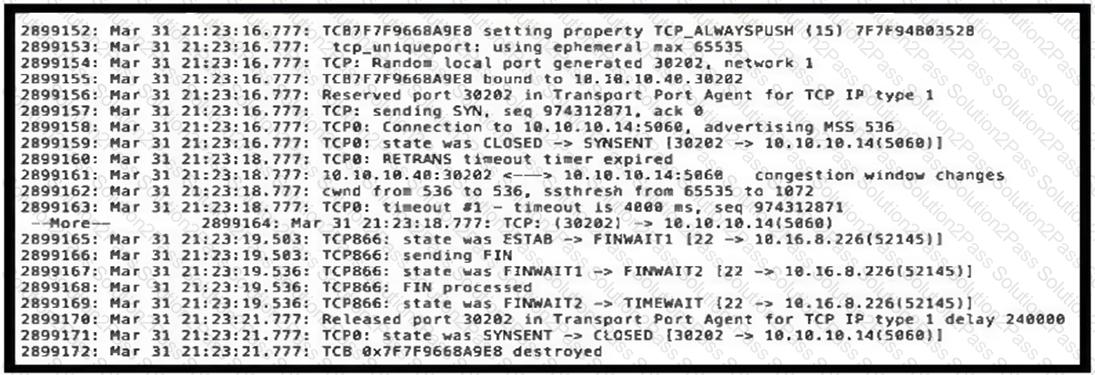
Refer to the exhibit. An engineer is trying to set up a new deployment using the SIP provider with TCP for signaling. After troubleshooting, the customer notices that the matching incoming dial peer and outgoing dial peer did not generate the INVITE to the SIP provider. Why is the call failing?
Refer to the exhibit.

Which INVITE is sent to 10.10.100.123 as a result of this log?
A)

B)

C)

D)

The Cisco Unified Communications Manager Dialed Number Analyzer allows analysis of calls from which two devices? (Choose two.)
Refer to the exhibit.
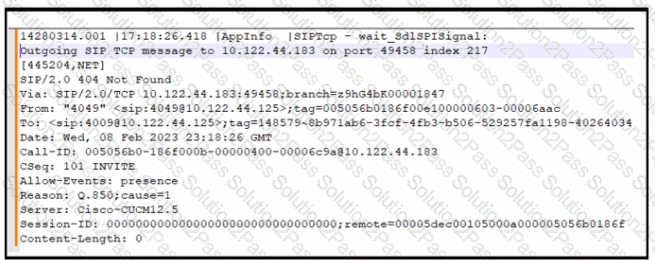
An administrator just upgraded to Cisco UCM to version 14 and started SIP implementation with some new SIP trunks. During the testing, an error was reported when making a call. Which action resolves the issue?
A company wants to use a Cisco phone system without the need for a local generic server. It is maximum 30 phones using a vendor-independent, industry-standard call protocol. What is the first command that must be entered to add this type of phone when registering a Cisco phone to this device?
Refer to the exhibit.
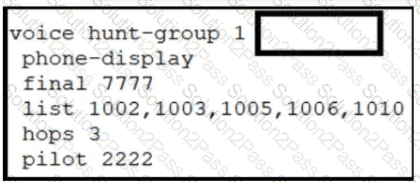
DN 1003 was the last to ring during the most recent call. Which hunting method ensures that DN 1005 is presented with the next call when the hunt pilot is dialed?
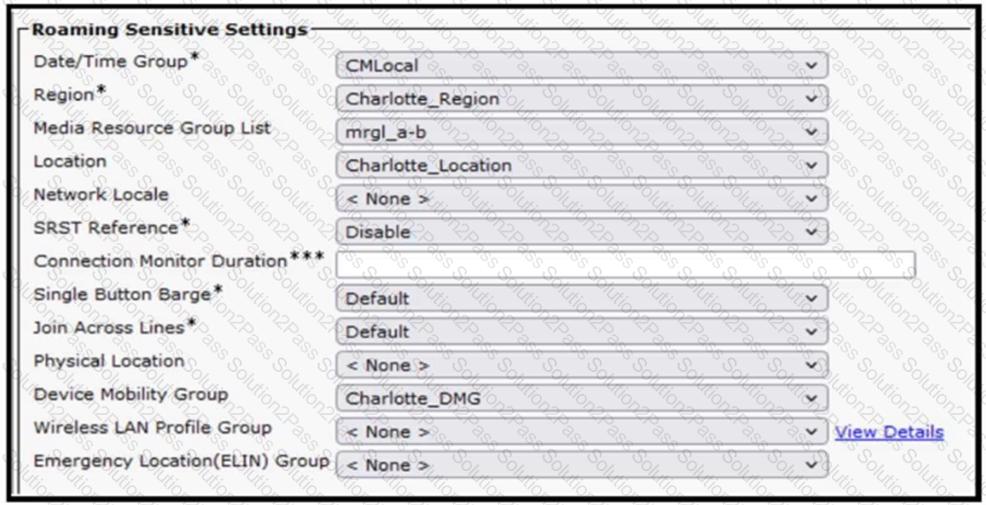
Refer to the exhibit. An administrator configured Device Mobility but is receiving reports that local calls are failing when a user takes their device from the RTP location to the Charlotte location. The administrator confirmed that the correct subnet is configured under the Device Mobility info page. In addition, the roaming device pool has the correct Device Mobility calling search space selected. Which configuration change resolves the issue?
A single site reports that when they dial select numbers, the call connects, but they do not get audio. The administrator finds that the calls are not routing out of the normal gateway but out of another site's gateway due to a TEHO configuration. What is the next step to diagnose and solve the issue?
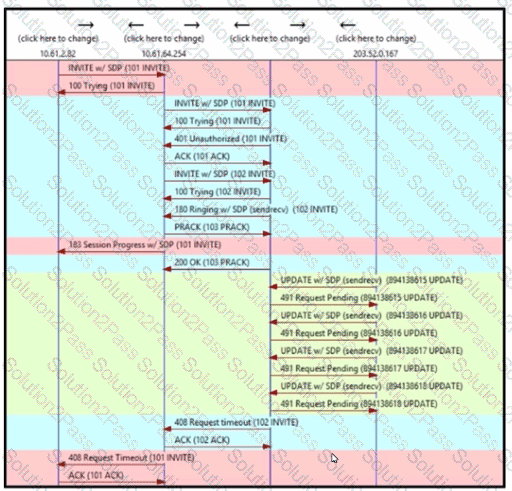
Refer to the exhibit. Calls from users to the PSTN in an organization get disconnected with a 408 Request Timeout when the called party is unavailable to pick up the call. Which solution must be used to resolve this challenge?
Some users report having issues dialing some external numbers when traveling to other locations within the company. The company has five locations in five cities in one country and has an egress gateway in each location for TEHO. The configuration has no specific entry stating that the roaming users are using the local gateway, but calls are going out. How is a verification of the call routing in such a specific configuration performed to further identify the problem?
An administrator troubleshoots call failure in a new deployment and finds that the SIP INVITE messages sent to the service provider contain a diversion header with the user's 4-digit directory number. These 4-digit directory numbers range from 1000 to 9999. The service provider is rejecting the calls because it requires that the diversion header contain 10 digits. Which command on the Cisco Unified Border Element resolves this issue for all users?
A)

B)

C)

D)

Which configuration must an administrator perform to display Translation Pattern operations in Cisco Unified Communications Manager SDL traces?
The sales department must answer phones when other sales members are not at their desks. The administrator knows that configuring Call Pickup allows the sales users to answer all the calls in the department by pressing only the softkey. Which call pickup configuration meets this requirement?
In Cisco Unified Communications Manager globalized call routing is implemented and must confirm that it is correctly implemented without making a call. Which tool do you use for verification?
When configuring hunt groups, where do you add the individual directory numbers that will be part of the group?
Refer to the exhibit.
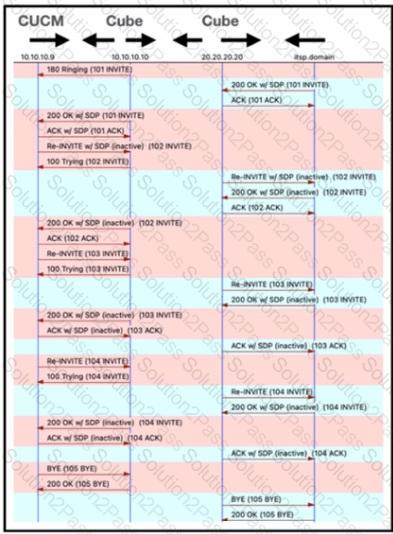
A no-way audio situation was experienced after the calling party on an outbound call placed the call on hold and then resumed from hold. Which action will resolve the issue?
An engineer is configuring a Cisco UCM solution. The requirements state that some users in one location will receive calls from a number during work hours 09AM to 5PM, and another group will get the calls from the same number outside this defined timeslot. Users will also change the outgoing number when reaching out to customers based on the same time-of-day routing rules. Which feature is needed to allow for this type of configuration?
Refer to the exhibit.
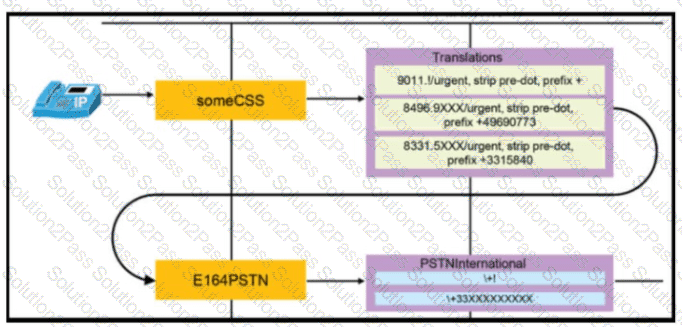
A user dials 84969010 and observes that the call is not routed immediately. The administrator notices that after matching the fixed-length translation pattern, the call hits the \+! pattern and waits for interdigit timeout What should be configured to ensure that the call routes out immediately?
